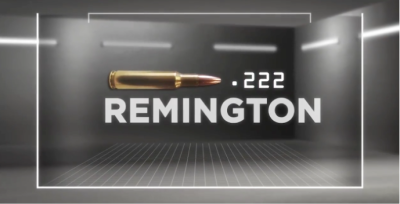How Do Guns Work Anyway? : The Ultimate Rifle Breakdown

The AR-15 is one of the most iconic guns to ever exist. It can be found is a variety of configurations around the world. While it is a great looking rifle, it is also well designed to help shooters experience little recoil and stay on target. To help everyone understand this in more detail, let’s open the hood on this great rifle.
The AR-15 was designed by Eugene Stoner and is based around a gas impingement system. This simply means that the gas produced by the fired cartridge helps to cycle the system. Once the gun is loaded and prepared for firing, the trigger is pressed which releases the hammer that is attached to a strong spring. The hammer swings up and strikes the back of the firing pin which is seated inside the bolt carrier group. The firing pin drives forward and strikes the primer on the round that is seated in the chamber. Once the striker hits the primer, a small spark is generated which ignites the powder inside the case. This burning powder creates an enormous amount of gas which pushes on the back of the bullet that is also seated in the case. The pressure forces the bullet out of the case and down the barrel of the rifle. Along with the bullet is a wall of hot gas. The AR-15 barrel includes a small hole drilled in the top near the end. This is a gas port and a portion of the gas in the barrel will enter this hole. It is then directed back onto the receiver of the rifle via a gas tube where it is fed into the bolt carrier group.
Once here it enters the BCG and releases the locked bolt lugs from the chamber and pushes the entire unit to the rear. The BCG will continue its rearward movement due to inertia and the bolt is pulled back from the breech. The BCG drives back into the recoil spring and buffer housed in the stock of the rifle. During this, the spent case is extracted and ejected. The recoil spring, which has been compressed by the BCG, pushes the bolt carrier forward again, stripping a fresh cartridge from the magazine, chambering it and, through interaction of the cam slot and bolt lug, the bolt is rotated into a locked position again. The AR-15 fires from a locked bolt, meaning that when a round is chambered, the bolt closes behind the case and rotates a full 15 degrees. The lugs on the bolt head then engage the protrusions on the barrel extension which lock the bolt in place. This helps keep it in place and capable of standing up to high pressure. Think of it like closing a vault door. During this motion, the hammer is forced back down under spring tension and the trigger resets. The rifle is now ready to fire again and begin the unique synchronized ballistic dance.


![Bargain Guns: Choosing the Best Rifle for the Money [2019]](https://content.gunbroker.com/wp-content/uploads/2019/08/rifle-1010035489-400x224.jpg)



![The Ammo Locker: All About the .300 Weatherby Magnum [Video]](https://content.gunbroker.com/wp-content/uploads/2021/02/AmmoLocker-.300-Weatherby-Magnum-400x204.png)
![Ammo Locker: All About 7mm-08 Remington [Video]](https://content.gunbroker.com/wp-content/uploads/2021/02/AmmoLocker-7mm-08-Remington-400x204.png)

![Ammo Locker: All About .223 Remington [Video]](https://content.gunbroker.com/wp-content/uploads/2021/02/AmmoLocker-.223-Remington-400x204.png)

